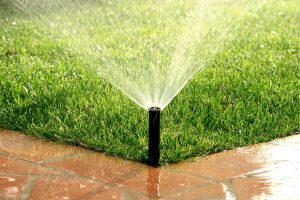 As we consider global warming, storm season, and weirder weather in general, the case for a smart irrigation controllers becomes more persuasive. More than the savings in your monthly JEA bill for water usage, it is the saving of our state, and the water supply that we need to keep in mind.
As we consider global warming, storm season, and weirder weather in general, the case for a smart irrigation controllers becomes more persuasive. More than the savings in your monthly JEA bill for water usage, it is the saving of our state, and the water supply that we need to keep in mind.
Did you know that up to 60% of our public freshwater supply is used for landscape irrigation? This is a shocking number considering the demands we place on our Floridan aquifer, which supplies 86% of Florida’s drinking water. In fact, we are tapping into the aquifer to the tune of nearly 8 billion gallons per day.
Fortunately, Florida gets over 50” of rain each year, and the water that doesn’t run off or go to surface water can eventually percolate back into the ground to replenish the aquifer.
However, there are threats to our water supply.
Threat: Population Growth
 Population growth, both in the amount of people that need fresh water to drink, and the increase of rain impervious surface in the form of new rooftops, driveways, and streets are a primary concern. Research has shown that 47% more water is used in-ground irrigation than with hose and sprinklers where water is applied manually. The reason is that people have a “set it and forget it” attitude towards their irrigation timers. But we can’t afford to forget it anymore; water is too precious.
Population growth, both in the amount of people that need fresh water to drink, and the increase of rain impervious surface in the form of new rooftops, driveways, and streets are a primary concern. Research has shown that 47% more water is used in-ground irrigation than with hose and sprinklers where water is applied manually. The reason is that people have a “set it and forget it” attitude towards their irrigation timers. But we can’t afford to forget it anymore; water is too precious.
Solution: smart irrigation controllers
Smart irrigation controllers are here to the rescue. They can allow you to “set it and forget it” without wasting water due to over-irrigation. A smart irrigation controller is a device that receives sensor feedback and adjusts the irrigation frequency or duration accordingly. These smart controllers are of two general types:
-
-
- Soil Moisture Controllers and
- Vapotranspiration Controllers
-
Soil Moisture Controllers. The sensors are buried in the soil at root-zone depth and measure the moisture content of the soil. Some work similarly to a rain sensor, which you are already required by law to have if your system was installed after 1991. They are called bypass systems. If your irrigation timer is set to start watering, and the soil is still adequately moist, the sensor stops the irrigation from turning on for that pre-set irrigation application. An “on-demand” soil moisture sensor has more control over when the irrigation timer starts and stops. Instead of just skipping a pre-scheduled irrigation event, it constantly monitors the moisture content of the soil and turns the water on and off as needed. This is truly a set it and forget method.
Evapotranspiration Controllers. (Also referred to as ET Controllers) These devices do not require any sensors to be buried. Evapotranspiration comes from two words, evaporation and transpiration. We all know that evaporation is the process of water turning to vapor and going into the atmosphere. Transpiration is the process by which plants transpire, or release water from tiny openings called stomata on the undersides of their leaves. The hotter it is or the higher the wind speed, the faster they lose moisture from transpiration. So, evapotranspiration controllers use weather data that takes into account rainfall, temperature, humidity, wind speed and other factors to determine when to turn the irrigation on.
There are 3 different ways that these controllers get this information to decide when to water your lawn.
- The first way is signal based. The controller is sent a wireless signal to tell it what the current meteorological conditions are in the area. This data can come from a publicly available source or a local weather station. The drawback is that in Florida, our rainfall can be very spotty, and the rainfall you get on your lawn is often different than the rainfall across town.
- There are also Historical ET controllers. These use pre-programmed water use curves for turfgrass based on what the conditions are historically and are often paired with a temperature sensor on-site.
- The last type uses weather sensors to get real-time data in your yard and calculate the ET rate continuously.
I know what you are thinking. These systems would take the guess work out of irrigation for you, but probably cost an arm and a leg. Well, not necessarily. A controller can be bought for $150 to $200 from a big box store or an online irrigation parts retailer. They interface with your smart phone using apps and would make a great gift for the tech-savvy person who either micro-manages their turf or wants the easiest way to manage their turf. Eventually, the cost savings in your water bill would make up for the cost of installation if you are an over-waterer.
Why not give your yard an upgrade and do something good for the environment all at the same time? For more information, you can always call your extension office to see what Duval County classes being offered. Florida Friendly Landscaping is one of our most popular offerings.
This article was written by Duval County Extension Agent, Tonya Ashworth, and originally appeared in the Florida Times Union.
 0
0
